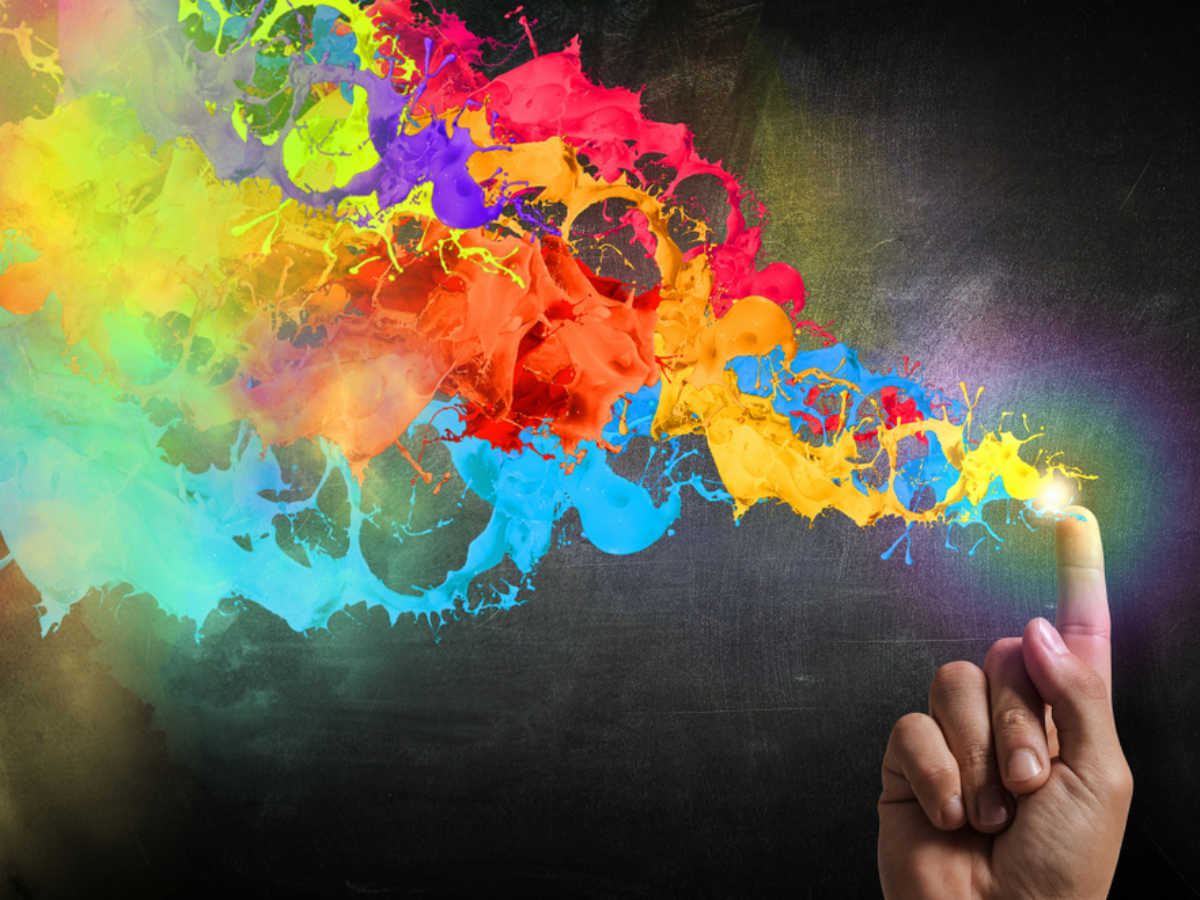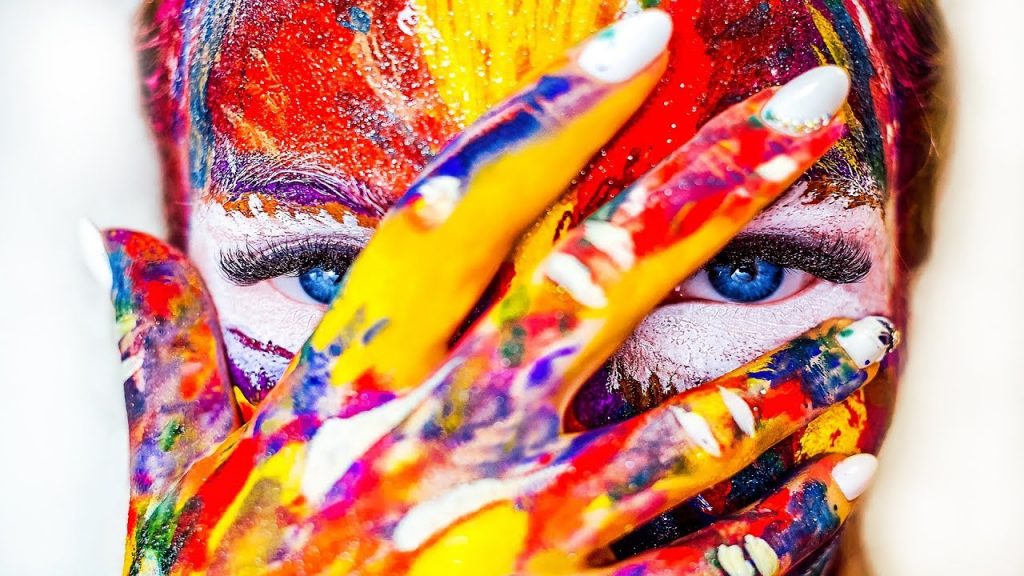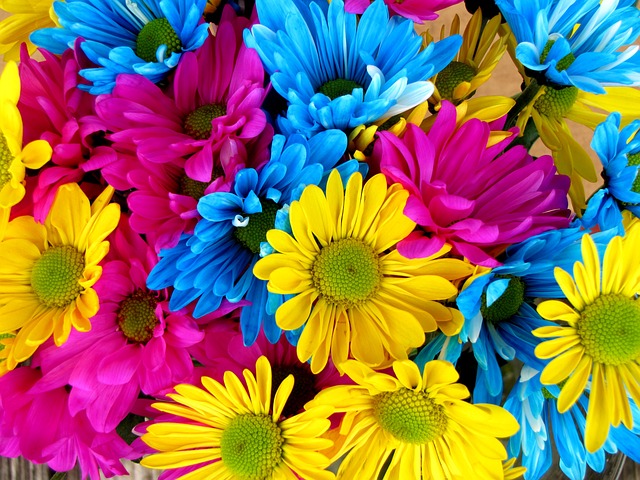
What is color Therapy ? How can they benefit us ?
What Is Color Therapy?
Color therapy is an alternative therapy that uses colors and their frequencies to heal physical and emotional problems within the human body. Color therapy is also known as chromopathy, chromotherapy, or color healing.
What Is Color Therapy Used For?
The goal of color therapy is to correct physiological and psychological imbalances in the human body. For instance, if you’re stressed, color therapy can help soothe you so that you can regain your psychological balance. If you’re depressed, color therapy can be used to invigorate you and give you increased energy.
Color therapy (or chromotherapy) is an alternative remedy that uses color and light to treat physical or mental health by balancing the body’s energy centers, also known chakras. This concept dates back to ancient Egyptians who used sun-activated solarium rooms constructed with colored glass for therapeutic purposes.
Today, both conventional and holistic practitioners acknowledge the bright potential of art therapy (which, naturally, includes color). And, although color therapy remains a gray area in Western medicine, enthusiasts are tickled pink over its influence.
Methods Of Delivery For Color Therapy
The alternative healing practice of color therapy relies on the delivery of the light frequencies of color to the body. The light enters the eyes to get into the human body or color therapy equipment may be used..

Through Eyes
One way to take advantage of light therapy is to view the color simply. You look at the color for a few minutes and receive the therapeutic effects as light enters your eyes. That’s all there is to the delivery. What you need to be careful with are the colors you choose. Green is considered the safest color. Red and orange may cause you too much excitement and agitation.
Color therapy is individualized as well. What works to help you might make someone else feel worse. For example, if you have a lot of anxiety and need to calm down, blue or blue light might be a good color to use.
If someone else were depressed, though, blue wouldn’t be a color they should use in color therapy. Red light is generally associated with negative emotions, but someone working to process anger may find it potentially useful.
The Chakra Rainbow of Color Therapy
1. Root: At the spine, the ‘grounding’ chakra impacts survival instincts, stamina and passion. “Red” may stimulate circulation.
2. Sacral: At the pelvis, the ‘optimism’ chakra connects to pleasure, enthusiasm and sexuality. “Orange” may be an antibacterial agent and ease digestion.
3. Solar Plexus: At the naval, the ‘willpower’ chakra is associated with happiness. “Yellow” may aid the lymphatic and/or neuromuscular systems.
4. Heart: At the heart, the ‘acceptance’ chakra is tied to balance and love. “Green” may fight depression.
5. Throat: At the throat, the ‘expression’ chakra focuses on communication and knowledge. “Blue” may calm breathing and/or the heart-rate and eliminate toxins.
6. Third Eye: At the brow, the ‘intuition’ chakra is associated with clairvoyance.“Indigo” may aid headaches.
7. Crown: On the head, this ‘knowledge’ chakra aligns with imagination and spiritual awakening. “Violet” may calm the nervous system
Psychological Effects Of Different Colors
Colors affect our mental processes and can change our mood. Colorful light enters through our eyes and may produce a certain psychological effect within the human body. Each color has a different effect, so different colors are used for different mental conditions and mood problems. The following list describes how each of the main colors used in color therapy affects us and what they can do for you.
Green
Green is the color of nature, and according to chromatherapists, it can help relieve stress and relax a person.
Green is the most balancing of all the colors. Color therapists usually consider green the safest color and typically start color therapy with it. When you’re feeling sad, hopeless, or depressed, green can improve your mood. However, it’s important to have a pure green color, as a light green can cause you to tip into anxiety.
Green is said to enhance the emotions of love, joy, and inner peace. It can bring you hope, strength, and serenity. Green is said to increase your wisdom and facilitate change and independence.
Blue
Chromatherapists use blue to treat depression and pain. Darker shades of blue are also thought to have sedative properties and may be helpful for people who experience insomnia or other sleeping disorders.
Blue is a color that must be used with extra care, as it can zap your energy if you’re feeling low. Blue does help you express your feelings, though, and is related to your inner truth. Blue is a cold color that can be used to help you become more peaceful and relaxed. Primary blue is often used in therapy settings used for meditation and relaxation.
Blue can also be associated with wisdom, creativity, loyalty, and spirituality. Too much blue or blue that is too dark can lead to sadness, depression, and a feeling of emptiness. Light blue promotes serenity. It can also be used to help with insomnia.
Yellow
Yellow can be used to improve your mood and make you happy and optimistic and in color therapy to bring energy and encourage action
This color can make you feel happier. It can bring out your intelligence and wisdom. Too much or too-bright yellows are associated with betrayal, cruelty, and deceit. It can remind us of our mortality. Yellow is the most intense color in the spectrum.
Orange
Orange, much like yellow, can be used to elicit happy emotions from people. The bright warm color is also thought to be able to stimulate appetite and mental activity.
Orange signifies abundance, pleasure, well-being, and sexuality. Orange may be used to stimulate different organs in the human body for physical healing. It revitalizes you and gives you increased mental energy. It can increase your feeling of connectedness between your mind and body. However, color therapists usually avoid this color for you if you’re prone to anxiety.
Red
Red is used to energize or invigorate a person who might be feeling tired or down. However, red may also trigger people who might already be tense, which is why it’s used carefully in color therapy.
The color red is even more stimulating than orange. It influences emotional issues like financial independence and physical survival. Red orange may also produce similar effects. It’s mostly used for physical healing because its emotional effects can be extreme.
Color therapists avoid shining red light on your head, as this can cause intense agitation. Infrared can also be used by a skilled color therapist if done so with caution. Neither red nor infrared is used for someone who has severe mental conditions.
Purple
Purple is most strongly associated with beauty, spirituality, and bliss. In color therapy, violet is often used on the forehead and neck to initiate feelings of calm and relaxation within the human body. However, it’s recommended for use on any part of the body.

What Color Therapy Can Help With
Color therapy has a host of uses. There’s some evidence to suggest that it can help with some of the following conditions:
- Stress
- Depression
- Aggression
- High blood pressure
- Sleep disorders
- Anxiety
- Certain cancers
- Skin infections
Color therapy is a form of alternative medicine treatment, and a lot more research still needs to be done into its effectiveness in treating the above conditions.
Benefits of Color Therapy
Over the decades, color therapy has been proven to have several benefits ranging from physical to mental. Some benefits that one might receive from color therapy include:
- Stress relief: Certain colors like blue and green can have soothing effects on people who are stressed or anxious.
- Boost your appetite: Warm and stimulating colors could boost your appetite when you struggle with having a desire for food.
- Alleviate seasonal affective disorder: People mainly suffer from seasonal affective disorder during colder weather because of the lack of sunlight and having to spend longer periods indoors. Warm colors like yellow and orange could help to alleviate symptoms of this condition.
- To boost your energy: Colors such as red and yellow have been proven to boost your energy and make you more motivated.

Effectiveness
The effectiveness of chromotherapy as an alternative medicine system has been debated over the years. While some people believe that it can treat both mental and physical conditions, others believe that this is only a myth.
In a 2015 study about the effectiveness of chromotherapy as a treatment option, researchers found that chromotherapy had positive effects on conditions like cancer, hypertension, skin infections, and depression.2
In a small 2019 study on the effectiveness of color therapy as an alternative treatment for anxiety in students, researchers found that it was able to relax and reduce anxiety among the students who participated in the study
Source :

29.8.25
Thanks lots for sharing knowledge…
Very interesting 💖
Oki
Very interesting article.Thanks for your sharing knowledge.Be safe and healthy our admins 🍀🌸
Very interesting content 👌
Thanks lots Admin….
Color therapy is very interesting topic for me…. Thanks.
Fantastic items from you, man. I have have in mind your stuff prior to and you are just too excellent. I really like what you have obtained here, really like what you are saying and the way by which you say it. You make it enjoyable and you continue to take care of to stay it sensible. I can not wait to learn far more from you. This is really a great website.
The uprising must succeed ✌
Thanks
.
💪💪💪must try hard
စိတ်ဝင်စားဘို့ကောင်းတဲ့ကုထုံးပါ
Nice treatment
I’m very interesting in color.
အရမ်းစိတ်ဝင်စားဘို့ကောင်းတယ်
🤍🖤💙💜
These are my favourite colours.
ဥယျဉ်ထဲက ပန်းတွေ အရောင်စုံပေမယ့် ရန်မဖြစ်ကြဘူးတဲ့
(စာ ရေးဆရာ တစ်ယောက်စာ တိတိကျကျ မမှတ်မိတာ ခွင့်လွှတ်ပါ)
11-5-2022
May11.
👍👍👍
Thank for sharing .
Done
click click click…
Thanks
14/
ကက/ဖိုက်တင်💞💞💞💞💞🧑💻🧑💻🧑💻💪💪💪💪💪
Fighting..
Thanks for knowledge sharing colour therapy.
ငို့ 14/တွေအရှုံမပေးနဲ့💪💪💪💪💪💞💗💞💗💞💗
Fighting
We must win💪
We must win💪
14/တွေလွယ်လွယ်အရှုံးပေးတဲ့အထဲအပါမခံဘူး
ရိုးသားကြိုးစာဧရာဝတီသား
Thanks for sharing 💐
AyAတို့ ဖိုက်တင်းပါ
All is well;)
AYA တို့ညီပါစေ
I like it.
I like it.
Thanks for your giving information.
done
done
thanks for knowledge
30-4-22
hi
Ok
Good
done
Hi
Very interesting! Thanks for sharing!
Arigatou
Thank
Good knowledge
Thank you
thank for knowledge.
Thanks for sharing about color therapy.
Thanks for sharing this article.
It’s worth reading.
အရေးတော်ပုံ အောင်ရမည်
Thank for sharing colour therapy.
Thanks…
Good post.Thanks for sharing.
Thanks for your kindness.😍
Done
Clicked